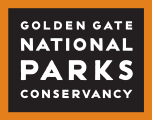ParkRx 2020 Census
The Institute at the Golden Gate is helping to advance the health and nature movement, focusing on the potential of the Park Prescription (ParkRx) model.
To determine vital baseline information on how ParkRx programs are being adopted, the Institute launched the first national ParkRx Census in 2018. Since then, we’ve seen growth across the country and updated the Census in 2020 to build on the information captured in 2018 and provide new information and insights on the ParkRx model.
The infographic to the right highlights key findings from the 2020 ParkRx Census.[1] The results indicate that while there are some observable trends, a universal ParkRx model has not emerged across ParkRx programs. Program activities (ranging from self-guided meditation to park ranger led walks), types of health benefit (either specific health goals or general wellness) and how data is collected (by a health care provider, at a park, or both) vary from program to program.
Park and healthcare providers continue to be interested in this movement but there remains an untapped opportunity to spur wider adoption of ParkRx through both standardized practices and more evidence-based studies. This approach would help build the case for the continued implementation of the ParkRx model by demonstrating the tangible benefits of nature on health and well-being with critical partnership from the healthcare sector.
[1] The 2020 Census represents a sample population of 37 ParkRx programs. We hypothesize that over 100 ParkRx programs exist nation-wide.


